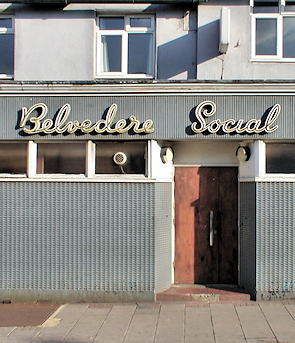Belvedere
Belvedere, Bexley
A diverse industrial and residential district rising inland from the Thames north-west of Erith

From the mid-17th century three substantial villas were successively erected beside a crossroads at Blinks Hill on Lessness Heath. The last of these was named Belvedere (or Belvedere House), from the Italian meaning ‘beautiful view’. Built in the 1770s, the house became home to a string of peers and knights, culminating with the philanthropist and reformer Sir Culling Eardley.
In the mid-19th century several factors combined to render the area ripe for profitable growth: the establishment of industries beside the Thames, the arrival of the North Kent Railway and Eardley’s willingness to develop his estate with housing for the middle classes. The village gradually expanded from a focal point near the present library. Meanwhile, the riverside hamlet of Picardy became Lower Belvedere, a settlement of terraced cottages for workers at the nearby factories and wharves. Eardley sold up in 1864 and his house became a seamen’s mission.
Apart from some development towards the south in the 1930s and some wartime bomb damage, Upper Belvedere remained unspoilt until the demolition of Belvedere House in 1959. Thereafter, many of the larger Victorian properties were subdivided into flats or knocked down and replaced with maisonette blocks or other compact dwellings. Despite the changes, the name of Upper Belvedere retains a cachet locally.
To the north, Belvedere’s industrial half is earmarked for further growth, as part of schemes to boost employment in the Thames Gateway region.
In common with much of outer south-east London, the population is very largely white; a small minority of residents are of Indian origin, mostly Sikhs.
